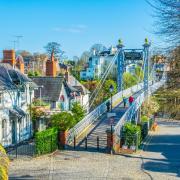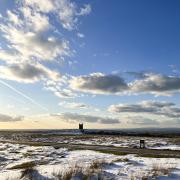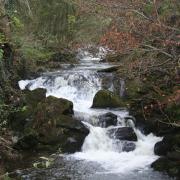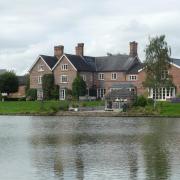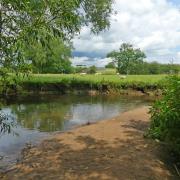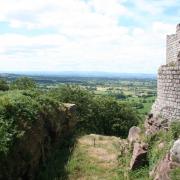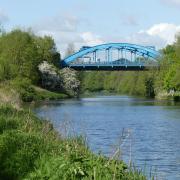You would be hard pressed to get lost on this month’s walk to Hilbre Island, but timing is crucial, for the tides wait for no man, warns Howard Bradbury.
As I walked through the tumbledown lifeboat station at Hilbre Island and stood on the crumbling slipway looking out to sea, I had the feeling I was not alone.
A head popped up a few yards offshore and looked my way. Then another...and another. A half dozen grey seals were idly swimming around the northern tip of the island, occasionally glancing my way to check I posed no threat.
This close encounter with nature was all the more thrilling because only 40 minutes or so earlier I had been in the thick of civilisation, struggling to find a parking spot in West Kirby and queuing for an ice cream before sallying forth across the sands.
The richness of the wildlife in this part of Wirral was apparent just a few minutes into this walk. Crossing the sands to the first of the three islands making up this offshore beauty spot, there was a cacophony of screeching birdsong. Terns, gulls, egrets, shelducks, herons, Manx shearwaters, rock pipits, peregrine falcons, gannets, oyster catchers...they’ve all been spotted here.

But I’m no bird-watcher. It’s the bigger beasts which fascinate me. Many a coastal walk has been tinged with anticipation of spotting a seal, and this encounter at Hilbre Island was the closest I had ever come to them.
Hilbre Island is one of 43 unbridged tidal islands around the nation’s coasts which can be reached by foot. It has long been a subject of fascination. Stone Age and Bronze Age man came here, as did the Romans. There was a church on Hilbre Island at the time of the Domesday Book, Benedictine monks lived here, and it became a place of pilgrimage.
Before the Dee estuary silted up and Liverpool developed into a mighty port, this point at the tip of the Wirral was strategically important to passing trade. In the 16th century, Hilbre Island had a salt factory and even a pub, which survived until the 19th century.
Today, there are a few private houses on Hilbre Island, though the lack of mains electricity and running water is an obvious drawback to island life. There are also some intriguing buildings like that decaying lifeboat station and the old telegraph station.

On a summer day, up to 500 people can make the walk out to Hilbre Island. Not surprisingly, some get it very wrong, and require the help of the local lifeboat crew. So this is how to get it right.
1. We start our walk at the Dee Lane slipway in West Kirby, postcode CH48 0AQ. There is a car park on Dee Lane, and also free parking on the front, if you can find a space. Timing is crucial for this walk. Do not set out until at least three hours after high tide (you can check tide times) and once on Hilbre Island, start the journey back at least three hours before high water. If you plan to stay on the island through a high tide, reckon to be on Hilbre for at least five hours.

2. Do not try to walk directly to Hilbre. Your first landmark is Little Eye, the small island furthest to the left as you set off from the slipway. Even with the tide out, you are likely to encounter pools of water up to three inches deep, so wellies or waterproof sandals may be more comfortable than walking boots. When you reach Little Eye, pass to the left of it, then bear right towards the next outcrop of land, Middle Eye or Little Hilbre. Pass to the right of this island but take care over the smooth rocks which constitute the ‘roadway’ to Hilbre as they can be very slippery. Beyond the end of Middle Eye, bear towards the left side of Hilbre Island where you will find a road leading up to the path which runs the length of the island.
3. After enjoying your time on the island, retrace your steps, leaving yourself at least three hours before high water is due. Never try to cross to the island from Hoylake. Bear in mind that there are no shops, no public toilets and no fresh water on the islands, and not much in the way of shelter, so as well as suitable footwear, take clothing for whatever the weather may throw at you.

Compass points
Area of Walk: West Kirby, Hilbre Island
Distance: 4 miles
Time to allow: 2 hours

Map: OS Explorer 266
Refreshments: Aubergine Café, Blenheim Building, The Crescent Walk, West Kirby CH48 4DA; The Wro Bar and Lounge, Grange Road, West Kirby, CH48 4DY.






